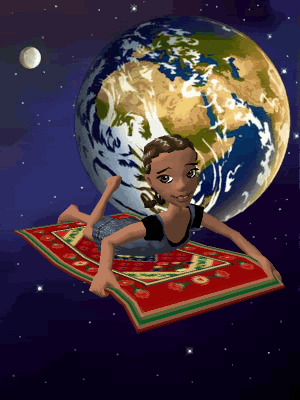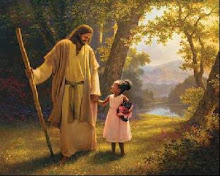I'm going to Introduce you to 3 fine men:
Green Flake
Oscar Crosby
Hark Lay
Green Flake:
Green Flake was born in Anson County, North Carolina, ca. 1828. In 1841 he traveled with his owners, James Madison and Agnes Love Flake, to Kemper County, Mississippi, where the family cleared land for a farm. During the winter of 1843-44 Madison, as he was called, and Agnes were baptized as members of the Mormon church and so was their servant Green. When the Flakes decided to join the main body of the church in Nauvoo, Green accompanied them. For a time he served as a bodyguard for Joseph Smith.
Oscar Crosby:
Oscar Crosby, was the older brother of Hark Lay but was owned by William Crosby, a wealthy landowner in Mississippi. Oscar was baptized a Mormon shortly after arriving in the Salt Lake Valley in 1847. He also built a house for his master's family in Holiday. When William Crosby's family was asked to settle San Bernardino, Oscar went along. California did not permit slavery and Oscar was given his freedom. Oscar did not return to Utah in 1857 with the other Mormons at the outbreak of the Utah War.
Hark Lay:
Hark Lay, was a black slave who traveled from Mississippi with John Brown to Winter Quarters to assist the "Pioneer" company, in 1847. (John Brown had guided the Mississippi Saints to Ft. Laramie and Pueblo, Colorado, in 1846. Returning to Mississippi to collect his family, he was asked to go to Winter Quarters and help the Pioneer company. He took 4 Blacks with him, two of whom died before reaching Winter Quarters.) John Brown had baptized Hark's owner, William Lay. Hark stayed in Salt Lake City that first winter and built a log house for the Lay family to occupy when they came in 1848. He was given his freedom. He never joined the Mormon faith. He married and settled in the small settlement of Union (Salt Lake Valley).
Brigham Young organized the pioneer company in the spring of 1847
As he and this company set out in search of "Zion" or a place far away in the west, Brigham Young became ill. As they were nearing the current Wyoming/Utah border an advances scout party was sent to go ahead of the ailing Brigham Young. Green Flake--as well as Hark Lay and Oscar Crosby--joined that advance party. Their goal was to find the easiest way for the main company of wagons to travel.
This company traveled down Echo Canyon, around Little Mountain, and through Emigration Canyon. They used shovels, axes, and other tools to create a passable road for the main body of wagons to follow. They were the first Wagon train to discover the Salt Lake Valley.
In the middle of Temple Square there is a Brigham Young Monument

On the back of this is a listing of all the names of those in that first pioneer company to come into the Salt Lake Valley. On the south plaque you would read the following: In Honor of Brigham Young and the Pioneers
On the North Plaque you would read: NAMES OF THE PIONEERS WHO ARRIVED IN THIS VALLEY, JULY 24, 1847. * SIGNIFIES THOSE NOW LIVING, THE UNMARKED ONES ARE ALL DECEASED.
It would then go on to list: The entire company and outfit consisting of of 143 men, 3 women, 2 children, 70 wagons, 1 boat, 1 cannon, 93 horses, 52 mules, 66 oxen, 19 cows.
Among the 143 men in a seperate section you would see the following: " (Colored Servants)*Green Flake *Green Flake (colored servants) William Carter Hark Lay Franklin Losee Oscar Crosby Datus William Carter Hark Lay Franklin Losee Oscar Crosby Datus "
Green and Martha Flake were active members of the LDS ward in Union. In addition to tithing, he made donations to building funds for the Union Ward and the Salt Lake Temple. He was a good neighbor by all accounts, extending a helping hand without being asked. He was also noted for his fine singing voice. Some accounts claim that Green maintained the friendly relationship with Brigham Young that began on the overland trek and that when the pioneer leader died in 1877 Green helped to dig his grave.
Although children of African American descent could and did attend school alongside whites in Utah, territorial law prohibited blacks from voting and from serving on juries and in the legislature until the "free, white" qualification was deleted on February 5, 1868. The 1870 census shows four black children attending school in Union. Some half-dozen black families lived in the area, and Green Flake seems to have been the leading figure among them.
Sometime after his wife's death in 1885, Green moved to Idaho to live with his son Abraham, until his own death on October 20, 1903. Both Martha and Green Flake are buried in the Union Cemetery.**
Oscar Crosby, born in Virginia ca. 1815, left Utah in the early 1850s with William Crosby, his owner, who was headed for the Mormon settlement at San Bernardino, California. Since California was a free state, Oscar could have claimed his freedom upon arrival there. He died in Los Angeles in 1870.**
Hark Lay, the slave of William Lay, lived in Salt Lake Valley for many years and was married to a slave owned by either George or John Bankhead. William Lay was planning to move to San Bernardino and did not have the funds to purchase Hark's wife. He attempted to find other solutions to the problem, but the record is unclear as to whether or not the couple were able to avoid separation.**
It's kind of funny how some of the very first inhabitants of Utah were black and there's such a poor showing of that now. Although it's so much better than it was 20 years ago. I can remember going into the stores and requesting certain hair care products and foods. Now with the ever increasing ethnic population of Utah it's just as easy to find most of what I want and need as it would be in my home town in Michigan.
When I first got to Utah I really didn't care for "Pioneer Day" or the statehood celebration of the pioneer history. People would go on and on about it and would be tracing their ancestors back to crossing over on some boat from England or Norway or whatever and making the trek into the Salt Lake Valley. My reaction to them would be
"Hell, at least they were free to walk. They were free to walk over, through or around whatever plantation or land they wanted without being hunted, chased, whipped or hanged for it. My ancestors, not so lucky"
(excuse my Golden J Kimball moment ;)
Of course if you know the history of LDS pioneers and the persecution they suffered, it could somewhat parallel that of the slaves. Persecution is persecution, period. no matter if you are being attacked for race, gender, religion, social, economical, physical bias. Persecution destroys not only people but US as a society.
I was sharing these thoughts with my mom about 10 years ago and she said...
"how is it that you can be so cold hearted against the pioneers when you are a pioneer?"
I didn't know what she meant. She went on to explain that
"in the latter days not too many black folks who were members of the church before 1978 will be around."
Our family joined in 1973 when I was 5 years old. Having been a member, a black member that long, and living the history before the Priesthood was restored to black men. (and yes I said Restored because there are those who were granted it back in our LDS history.)
"You are paving the way for your family and all you come in contact with in the church. There will be those who look to you for strength, courage, faith and endurance. You, my dear, are a Pioneer. A Black Mormon Pioneer."
I wasn't interested in that title and repsonsibility at the time but I gladly accept it and appreciste it now. I am a Pioneer. If you think about the generations to come that will be reading about your lives and history and the choices you've made you, too, are pioneers. I just happen to be a Black
LDS Pioneer. :)



6 comments:
Thanks for all the info! Living fairly close to San "Berdoo" as we do, we are a tiny bit familiar to the contributions and sacrifices of the LDS Black men and women who came and help settle the area. It sickens me to think of the Lay family being separated (as we have been told, it was for quite some time, although there are multiple versions of their experience, so we are not sure if they ever made back to each other.)It's great that you are such a positive source for even more information. Thanks!
Being a Pioneer has both its advantages and disadvantages. On the one hand, you get to develop your own traditions and can incorporate elements of both your original culture and those of the restored Gospel. On the other hand, sometimes we include the wrong aspects of our original culture. I see a lot of that in India. It's both exciting and frustrating.
Wow, great info. I did't know any of that. I didn't know slavery was every practiced in Utah. I've always been proud of the fact that one of my ancestors is on the This is the place monument. She was one of the three women (Harriett Decker). I never paid attention to the reference to servants, but I don't like that they are separated that way. It seems like the Church should update that.
There's a family history story about a woman on my dad's side (Eliza Partridge Lyman) and Jane Manning. There is a scene on Jane's gravestone of her taking a loaf of bread to my ancestor because they had nothing to eat. You can read about it at http://en.wikipedia.org/wiki/Jane_Elizabeth_Manning_James. I just learned about this story a couple of years ago.
Actually It's Jane bringing Eliza a bowl of flour, and it was half of the flour Jane had :) My Friend Margaret Blair Young wrote the play "I AM JANE." And from 2000-2002 we traveled all over the state of Utah, Chicago IL, and Longbeach,Ca doing the play for pioneer day. A few of my friends had the chance to play Eliza Patridge Lyman. I played Janes Sister Sarah in the play and read the biograpy as if the voice of Jane at the Dedication of that Gravesite monument. The LDS Genesis Group played an important roll in creating the monument, also the one behind it for Elder Elija Abel. I'm pleased to have been a part in bringing this history forth, Many still don't know about the history of the black LDS pioneers.
Thanks for the clarification. I just learned about it at a family reunion a couple of years ago. I need to go see the gravesite. I've never been to that cemetary.
Here's my e-mail that you asked about: kristin.batchelor27@yahoo.com.
It was great to see you on Sunday.
Greetings from Nagasaki. I enjoyed reading your webpage. Living as an expat in Asia for almost two decades has taught me that race is not a valid method of establishing personal identity—we are all brothers and sisters. Green Flake was truly a great man. I am a descendant of Madison and often read of Green in family journals. The Flake family is quite diverse now as the family now includes Japanese and Koreans. Thanks for the good read and for sharing about Oscar Crosby and Hark Lay.
Sincerely,
Lee Flake
Post a Comment